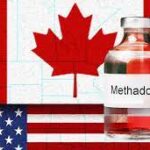How Internationally-Trained Doctors and Pharmacist Can Immigrate and Work In The US & Canada

The United States and Canada are grappling with shortages of doctors and pharmacists in certain regions and specialties. These shortages were attributed to various factors, including population growth, an aging population, retirement of medical professionals, geographic disparities, specialty imbalances, and immigration and visa policies. The growing demand for healthcare services due to population growth and the increasing healthcare needs of aging populations contributed to the strain on the existing workforce.
According to data from the Association of American Medical Colleges (AAMC), the United States is projected to face a significant physician shortage in the coming years, with potentially up to 124,000 fewer physicians than needed by the year 2034. This projection is a result of various factors that contribute to the widening gap between the demand for physicians and the available supply.
Canada is also facing challenges with a shortage of physicians, and the situation is expected to worsen significantly in the coming years. Federal data indicates that within just five years, by 2028, Canada could experience a deficit of around 44,000 doctors, with family doctors and general practitioners being particularly affected, accounting for over 30,000 of the projected shortage.
Both countries are also experiencing shortages of pharmacists and pharmacy technicians in certain regions and settings. To address these shortages, efforts are being made on multiple fronts. Increasing enrollment in medical schools and offering incentives for more students to pursue primary care or specialties with shortages aimed to bolster the supply of doctors. Recruitment programs are being implemented to attract and retain medical professionals in underserved areas, particularly rural and remote regions. More recently both countries have made changes to make the recruitment of medical professionals from other countries and facilitating their immigration was considered to help fill the gaps in the healthcare workforce.
United States
US Foreign medical graduates (FMGs) who wish to practice medicine in the United States must go through a rigorous process to meet the country’s high medical standards and licensing requirements. The Education Commission for Foreign Medical Graduates (ECFMG) plays a crucial role in assessing FMGs’ qualifications and determining their readiness to enter US graduate medical education (GME) as residents or fellows.
To begin their medical career in the US, FMGs must have completed four years of healthcare education in an accredited medical school listed under the International Medical Education Directory (IMED) by the Foundation for Advancement of International Medical Education and Research (FAIMER). Additionally, they must pass the US Medical Licensing Exam (USMLE) and obtain ECFMG certification.
The USMLE comprises three steps: Step 1, Step 2 (CK and CS), and Step 3. These exams evaluate the examinee’s ability to apply medical knowledge, principles, and concepts in solving medical problems and providing patient care. The exams are designed to test practical skills and the application of medical concepts, rather than solely testing memory.
To become ECFMG-certified, FMGs must pass Step 1 and Step 2 (CK and CS) exams. After obtaining ECFMG certification, they can apply for a residency or fellowship program in a US healthcare facility. Some states may require FMGs to complete all three steps before applying for residency, while others may consider Step 1 and Step 2 scores along with a powerful application letter.
Following successful completion of the USMLE series and ECFMG certification, FMGs can begin the application process for residency programs. They may spend 3-8 years in a residency or fellowship program, depending on their chosen medical specialty. Residency programs are paid positions, and FMGs receive a monthly salary for their services in a US healthcare facility.
Becoming a certified pharmacist in the United States as a foreign-trained professional involves a multistep process overseen by the Foreign Pharmacy Graduate Examination Committee (FPGEC), a committee of the National Association of Boards of Pharmacy. Eligibility requires candidates to have graduated from an approved pharmacy program in their home jurisdiction, hold a valid license, and demonstrate fluency in English. The application process includes submitting documentation of education, licensing, and taking the NABP TOEFL test to establish language proficiency. After successful verification, candidates must pass the Foreign Pharmacy Graduate Equivalency Examination (FPGEE), a comprehensive exam covering various pharmacy-related topics. Passing the FPGEE establishes eligibility for licensing, but actual licensing requirements vary by state, and candidates may need to fulfill additional criteria, such as additional exams, background checks, and ethical conduct agreements.
Foreign-trained pharmacists seeking to work in the US should thoroughly follow the FPGEC’s guidelines and state-specific licensing procedures to ensure a smooth transition into the profession. The FPGEC plays a crucial role in evaluating the candidates’ qualifications, ensuring their knowledge and training are comparable to US-trained pharmacists. The comprehensive FPGEE examination assesses the candidates’ competency in clinical sciences, pharmaceutical sciences, administrative and behavioral topics, and basic biomedical sciences. Obtaining a license to practice pharmacy in the US requires fulfilling each state’s unique licensing criteria, which may include further exams and background checks. It is essential for candidates to research and contact the state boards of pharmacy in the states they plan to work to understand specific requirements and ensure compliance with licensing regulations. While the process may be demanding, it guarantees that foreign-trained pharmacists meet the high standards necessary to provide safe and effective healthcare services in the United States.
Many states in the US have created new schemes and programs that makes it possible for foreign trained doctors and pharmacists to be licensed and practice freely within their states.
Canada
As Canada faces a shortage of physicians, it has implemented various immigration pathways to attract international medical professionals. Physicians can immigrate to Canada through the Federal Skilled Worker Program (FSW) or the Canadian Experience Class (CEC) Express Entry programs. Additionally, Provincial Nominee Programs (PNPs) allow provinces and territories to nominate physicians for permanent residence based on regional labor market needs, with some provinces having specific streams dedicated to helping physicians immigrate.
Before physicians can practice in Canada, they must have their qualifications recognized by the Medical Council of Canada (MCC). The MCC grants the qualification known as the Licentiate of the Medical Council of Canada (LMCC) to medical graduates who have met certain criteria, including passing the Medical Council of Canada Qualifying Examination (MCCQE) Part I and Part 2, and completing at least 12 months of acceptable postgraduate training.
To achieve full licensure to practice anywhere in Canada, family physicians must meet specific requirements, including having a medical degree from a recognized medical school, being a Licentiate of the Medical Council of Canada, completing an appropriate postgraduate training program, and achieving certification from relevant medical authorities.
While foreign-trained physicians can start practicing with a provisional license, the licensure requirements may vary among provinces. The MCC offers a credential verification service through PhysiciansApply.ca, helping medical students and graduates navigate the process of becoming licensed physicians in Canada.
One of the challenges faced by internationally-educated physicians immigrating to Canada is the limited availability of residency spots. Expanding the capacity of hospital and university networks, adding educators and assessors, and increasing residency spaces in the medical system are seen as potential solutions to this bottleneck.
Efforts are also being made to streamline credential recognition for internationally-trained physicians and international medical graduates. For instance, the College of Physicians and Surgeons of Ontario (CPSO) is planning to implement a three-month program to recognize foreign credentials of physicians in the province.
Foreign pharmacy graduates who want to become licensed pharmacists in Canada must follow a series of procedures set by the Pharmacy Examining Board of Canada (PEBC). The first step is to have their pharmacy degree evaluated by the PEBC to ensure it meets Canadian standards. This evaluation requires submitting various documents, including the application form, identification, immigration record, university degree certificate, transcript, and licensing statement. Once the document evaluation is completed, candidates can proceed to the next steps.
The next steps involve passing two exams conducted by the PEBC: the Evaluating Exam and the Qualifying Exam. The Evaluating Exam assesses if the candidate’s program of study is comparable to Canadian standards, and the Qualifying Exam consists of two parts: a multiple-choice question (MCQ) exam and an Objective Structured Clinical Examination (OSCE). Passing these exams grants the candidate the “Certificate of Qualification” from the PEBC.
After obtaining the PEBC certification, candidates must choose the province in which they want to practice and fulfill additional requirements set by that province’s regulatory body. These requirements often include completing a language proficiency exam (e.g., TOEFL or IELTS), practical training in the pharmacy (studentship and internship), and passing a Jurisprudence exam to demonstrate knowledge of pharmacy-related laws and regulations in the province. Once all the requirements are met, candidates can apply for a pharmacist license in the desired province and start their career as a licensed pharmacist in Canada.
Earning Potential Of Internationally-Trained Doctors And Pharmacists in the US and Canada
The earning potential of internationally-trained doctors and pharmacists in the US and Canada can vary significantly depending on various factors such as the specific location, type of employment, level of experience, and specialization. Generally, doctors and pharmacists in both countries can earn competitive salaries due to the critical nature of their roles in the healthcare system.
Internationally-Trained Doctors in the US: In the US, internationally-trained doctors may need to go through a series of exams and residency programs to practice independently. Once they obtain the necessary certifications and licenses, their earnings can vary widely. According to data from the U.S. Bureau of Labor Statistics (BLS), the median annual wage for physicians and surgeons was around $208,000. However, this can vary significantly depending on the medical specialty, with some specialists earning significantly more.
Internationally-Trained Pharmacists in the US: For internationally-trained pharmacists in the US, the earnings can also vary depending on factors such as the state, type of pharmacy (hospital, retail, etc.), and experience. According to the BLS, the median annual wage for pharmacists in the US was about $128,000.
Internationally-Trained Doctors in Canada: In Canada, the earnings of internationally-trained doctors can vary depending on the province and the specific healthcare system. According to data from the Canadian Institute for Health Information (CIHI), the average gross clinical payment per physician in Canada was around $350,000. However, this average can be higher or lower depending on factors such as the type of practice and location.
Internationally-Trained Pharmacists in Canada: For internationally-trained pharmacists in Canada, the earnings can also vary depending on the province and the specific practice setting. According to data from the Job Bank of the Government of Canada, the median wage for pharmacists in Canada was around $97,000.
It is important to note that these figures are general averages, and actual earnings can vary widely based on individual circumstances. Additionally, salaries can change over time due to factors such as inflation and changes in the healthcare industry.





